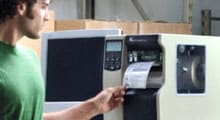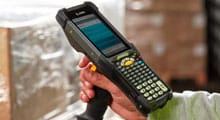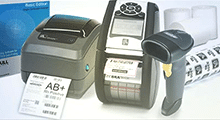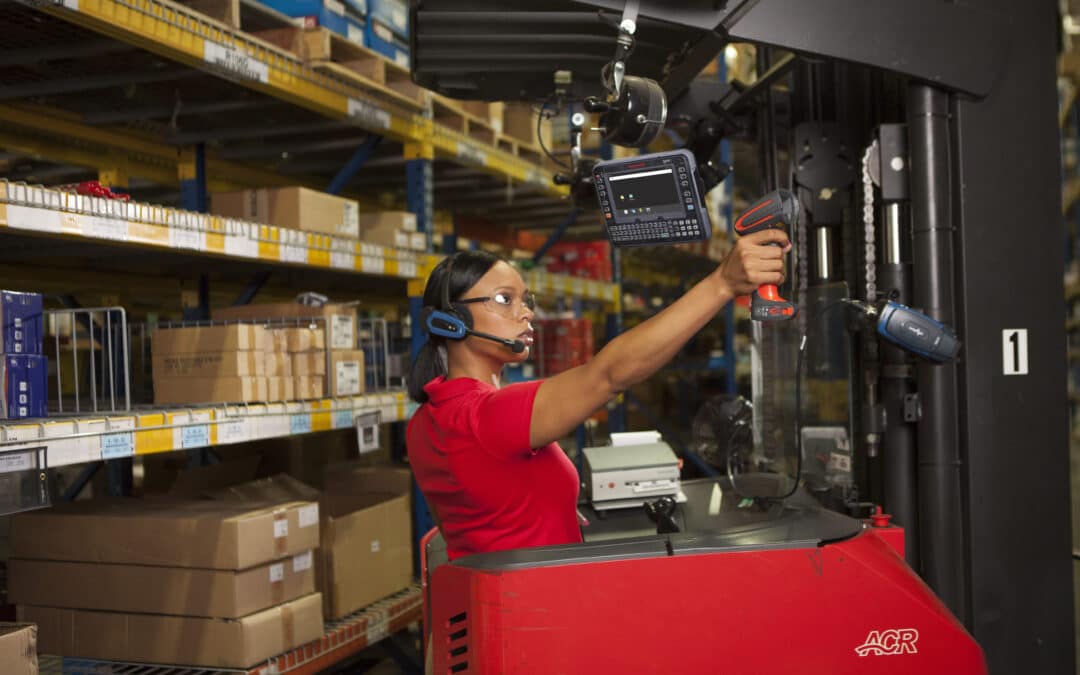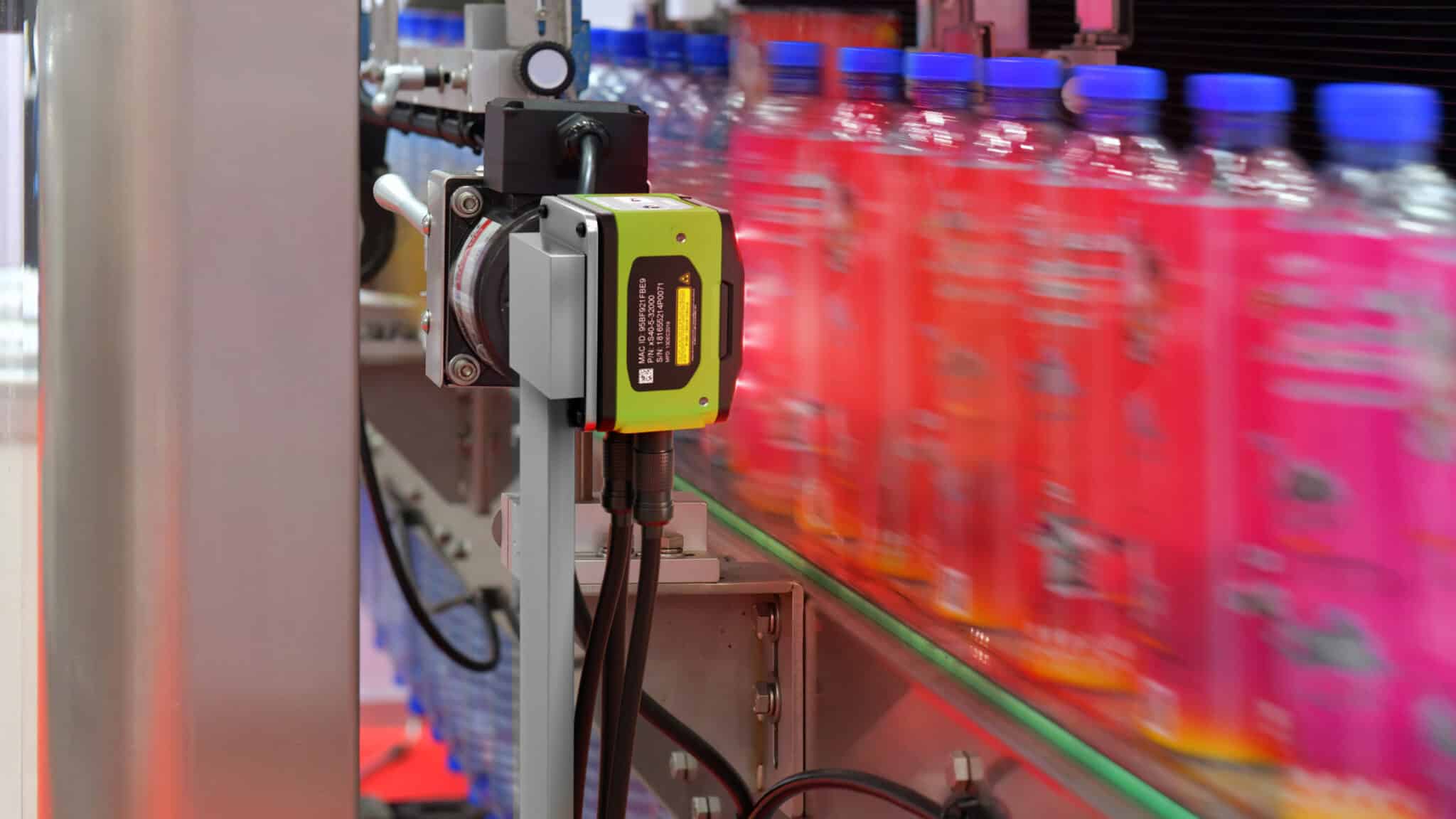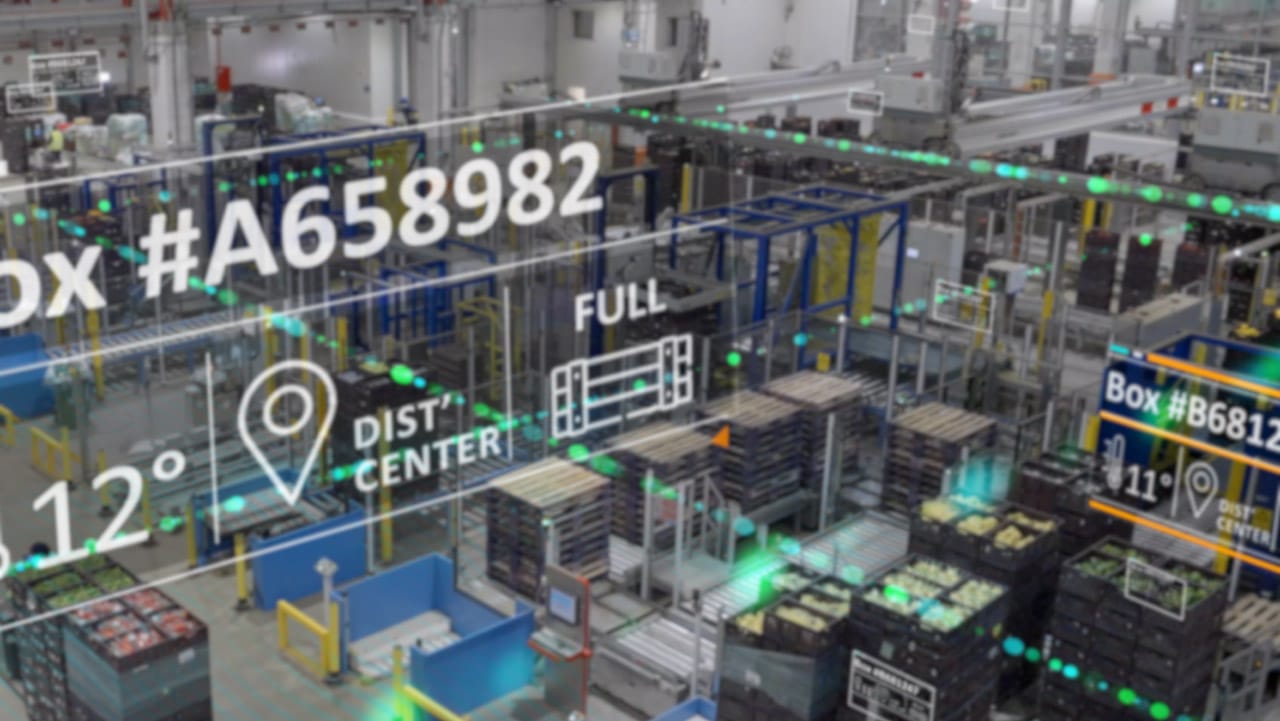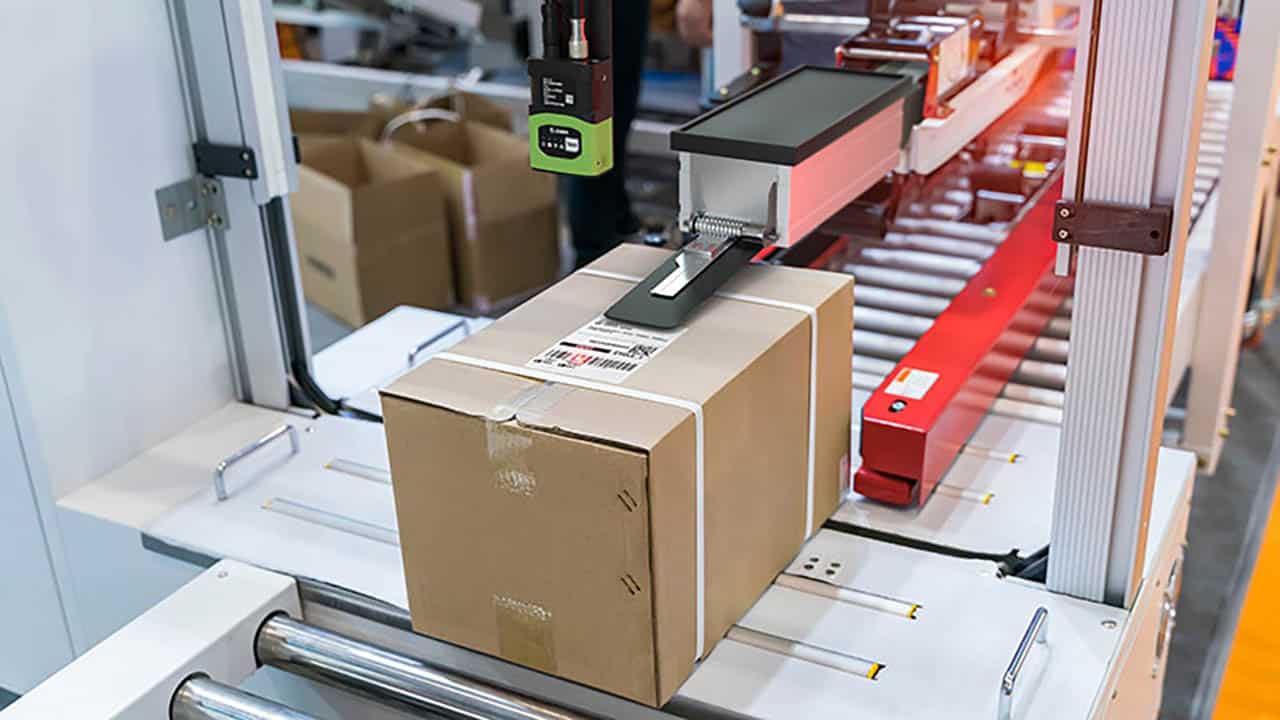After a seven-year quest to create a new kind of high-volume logistics company, Siena is helping major customers leverage the full power of analytics and artificial intelligence
Back in 2013, John Dwinell had spent more than fifteen years designing cameras and software for “scanning tunnels” — sophisticated assemblages used to capture images of products as they move through distribution centers and loading docks — for his employer, SICK AG. He enjoyed the work, was respected in the field and was achieving his career goals. Life was good.
At the same time, Dwinell knew his corner of the logistics technology market was ripe for change. Scanning tunnels snapped millions of images a day, but they did little more than ensure barcodes were visible to dedicated scanners. With advances in data analytics and artificial intelligence, Dwinell realized, those images could be stored and analyzed at scale, unlocking a potential treasure trove of profitable new applications.
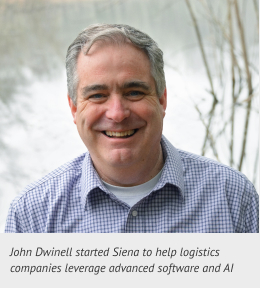
So Dwinell started Siena Analytics. His goal: Leverage his deep experience in this very particular aspect of high-speed logistics technology and combine it with cutting-edge analytics and AI.
“Before the explosion of e-commerce, logistics lagged many years behind other industries in adopting these technologies, and I didn’t see any signs that this was about to change,” says Dwinell. “I didn’t start Siena because I wanted to start a business. It just turned out that I couldn’t realize my vision without building a business.”
Automating tasks and streamlining operations with advanced logistics
Today, Dwinell’s company counts one of the largest in each, Parcel shipping and Retail, as customers of its Siena Insights product. Siena Insights, capturing and analyzing one billion digital images a day, automates tasks that previously required human attention, such as troubleshooting problems that are delaying or preventing a package from being delivered, such as an incorrect address or shipping label that’s too dirty to be read by a sensor. And increasingly, the product uses AI to identify patterns in the data that point to opportunities for operational improvement. Integrated with scanning tunnels made with sensor and camera systems from leading camera vendors, the system helps customers save time and money.
“This work has been groundbreaking for us,” says an executive from a large logistic services provider.
“This work has been groundbreaking for us.”
Senior executive at large logistics provider
Siena is well-positioned to take advantage of continued growth in shipments, already soaring due to the pandemic and an explosion in online buying. Parcel volumes are projected to have grown 22% in 2020, according to the Pitney Bowes Parcel Shipping Index, and are expected to double by 2026. “More parcels means there will be more processing centers with more scanning tunnels, which means a lot more data for Siena,” says Gene Sanders, president of VirTeca, a materials-handling system integrator that resells Siena Insights. “They have a huge opportunity to add a layer of intelligence to the way this industry operates.”
The company is also betting on the notion that logistics companies can’t afford to ignore artificial intelligence, especially given the high bar Amazon has set in using it to slash costs and streamline operations. To help level the playing field, Siena plans to introduce an AI Tool Box to its Insights software. Already used internally, the offering will let customers train their own AI models to detect patterns based on thousands or millions of images — say, whether to redeploy more staff to a lane that’s handling a spike in volume or to identify that a vendor has been shipping its products without proper labels.
The roots of a vision
Originally an electrical engineering major, Dwinell changed to computer science as an undergrad, earning a master’s in CS from Boston University. In his first job with Thermo Electron, a Boston-based maker of pollution-measuring instruments, he led a project to computerize the company’s products so they could collect and analyze data from the instruments. “It made the instruments a lot easier to use, and a lot more useful,” he recalls.

His next stop was Computer Identics, which had pioneered the commercialization of bar codes back in the late 1960s. By the time Dwinell joined in the mid-1990s, the company had fallen on hard times for failing to leverage computing technology to increase the value of its hardware. He started a unit that built systems that used lasers to capture packages’ dimensions; Computer Identics sold the unit to SICK in 1997.
Soon, Dwinell was running the unit of SICK that made cameras and other sensors to go into scanning tunnels. These products and assemblies helped SICK maintain market leadership. But Dwinell saw an opportunity to help customers manage scanning tunnels from a single software console, rather than with on-site experts in the hardware, and to make much better use of the images these systems capture.
He also recognized the potential of recent advances in artificial intelligence. In a habit formed in graduate school, he spent his nights reading academic papers and computer science journals about recent breakthroughs in the field. When Google AI experts revealed that a machine-learning system could identify images of cats even though it hadn’t been told what a cat is, Dwinell was already thinking about how SICK’s customers could apply such systems to streamline logistics processes. What’s more, rapid development of technologies such as cloud computing, AI chips and smart cameras meant he quickly could turn these ideas into actual products.
“It was clear that all the trends were finally coming together. It was time to build a software company.”
John Dwinell, CEO Siena Analytics
“It was clear that all the trends were finally coming together,” he says. “It was time to build a software company.”
Creating a logistics software company
His first instinct was to build a software unit within SICK, an idea he pitched to the company’s board at a meeting at its headquarters in Waldkirch, Germany. But when he explained his plan to store and continually analyze the millions of images captured every day, the response was dismissive: “Nobody could possibly look at all those images,” he was told. When he explained that “we’re going to train computers to do it for us, they looked at me like I was crazy,” he says.
Not long after the board meeting, he and his wife Pam Gianetti, now the company’s chief financial officer, set up shop near their Boston-area home. The new startup had the advantage of starting out in partnership with one of Dwinell’s longtime customers, which funded much of the R&D and product development costs. As a result, Dwinell did not need to raise financing; the company has been profitable from the start.
The early focus was on using traditional analytics to more efficiently deal with products that didn’t flow smoothly through distribution and retail networks. In any logistics operation, some products — those with smudged barcodes, or shipping labels that had fallen off, or that had been banded together in a way that concealed those labels — end up in “hospital lanes” where quality-assurance specialists have to troubleshoot how to get them back on their way. Siena’s goal: help those QA workers move packages off the hospital lane as quickly as possible.
Previously, for example, package handlers with one large package delivery service had to figure out the extra charge for big or unwieldy products such as tires, spools of steel cable or other items that can’t be shipped in a box. Siena created an app that automatically sends images of these products to gig workers, who assign it to the right product category (it’s a tire, for example) for $.05 per image. “That was a huge win for us,” says a manager involved in the development of the application for the company.
By 2018, Siena Insights could recognize the root cause that led a product to the hospital lane in 80% of cases.
You’ve got a friend in the AI business
Much more will be possible as Siena builds more AI capabilities into its products. Its growing team of data scientists and AI experts, using off-the-shelf machine language tools, is working on ways to help customers automate jobs now done by humans. For example, artificial intelligence will soon make it possible for customers to categorize those “non-conveyable” products automatically, without requiring the gig worker.
But AI will also be able to identify entirely new ways to improve operations. Say a label falls off a package somewhere in the middle of a vast distribution center. An AI-based system could take details already known about the product, such as an image showing a scratch in the cardboard, to create a “digital twin” of the package, which could be used to identify the package and make a new label.
Logistics companies do the same thing millions of times a day — unload packages, sort them and put them into trailers, says a supply chain executive with a large distributor. “So we have a lot of data, and a limited number of processes. That makes us a prime candidate for AI, and we’re at a huge jumping-off point to do more with it.”
“A lot of times, companies drive by looking in the rearview mirror. I want to focus on where the technology is going, and help companies take advantage of it. AI is still a pretty intimidating topic to people, but it won’t be two or three years down the road.”
John Dwinell, CEO Siena Analytics
Democratizing logistics software for a wider range of customers
That’s certainly Dwinell’s view. While Siena has focused on satisfying the needs of a few very large customers, he is now building up its capabilities, particularly in sales and marketing, to reach a broader swath of retailers and distribution services providers. His goal: to democratize the power of AI, while also pushing the state-of-the-art of logistics forward.
He points to Polaroid, his wife’s former employer, as an example of a company that failed to stay in front of emerging trends; the imaging company went bankrupt after it missed the transition to digital photography.
“A lot of times, companies drive by looking in the rearview mirror,” Dwinell says. “I want to focus on where the technology is going, and help companies take advantage of it. AI is still a pretty intimidating topic to people, but it won’t be two or three years down the road.”








